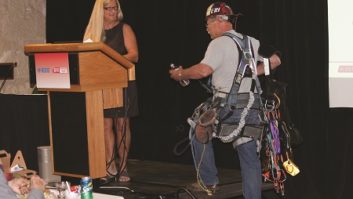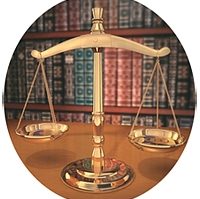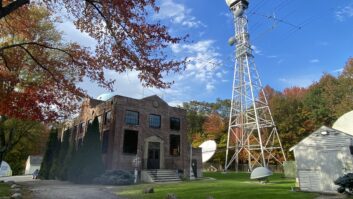There I was, minding my own business, trying to stay out of trouble by keeping radio stations on the air. Then it happened: The phone rang.
It was the owner of KBUN Radio in Bemidji, Minn., asking if it was OK for the city to build a water tower just 600 feet away from his 1450 kHz AM tower.
“Let’s see now,” I said, “600 feet at 1450 kHz, that’s just under one wavelength!” Ouch. “How tall is this water tower going to be?”
“They say it is going to be about 165 feet in height,” he answered.
“That’s a quarter-wavelength at 1450. It is beginning to sound like an AM directional antenna,” I said.
What to do
First let’s look at FCC Rule 73.1692, which I mentioned in an RW article a few months back:
“Where a broadcast licensee or permittee proposes to mount a broadcast antenna on an AM station tower, or where construction is proposed within 0.8 km of an AM non-directional tower or within 3.2 km of an AM directional station, the broadcast licensee or permittee is responsible for ensuring that the construction does not adversely affect the AM station.”
So the process began. Meeting at an architect’s office. Meeting at city offices. Meeting with the radio station owner. The proposed water tower had a poured-concrete hollow cylinder about 35 feet across as the base for holding the poured-concrete tank at the top. The concrete has wire-mesh rebar for reinforcement.

Too close for comfort.

Closeup of the detuning hardware on the outside of the water tower.
I asked for and got the bid to include welding all of the mesh pieces together so they will form a complete metal mesh cylinder within the concrete base and the water bowl. They provided connection points for six unipole down-lead wires and brackets from the bowl. That hardware was supplied by Nott Ltd. along with a detuning box for the inside of the tower.
Since the tower also is used as a garage for city equipment, the detuning box had to be about 18 feet above the floor. The six unipole wires enter feed-through insulators on the walls of the tower base to the top of the box. Six ground wires parallel those wires and go to the bottom of the box. So the detuning box is suspended in midair by the 12 wires and must be reached by a very tall stepladder.
How do I get myself into these situations? I thought engineers weren’t supposed to climb high!
In the end
The project went well. I supervised some of the construction — including the welding, where the specification was for less than a 5 percent failure rate on the mesh-to-mesh welds.
The unipole skirt wires on the tower form an inductor and there is a vacuum variable capacitor in parallel to resonate it to the required frequency. That capacitor is in a box near the base of the structure. The circuit presents a high RF impedance at the frequency of interest and therefore little or no current flows to ground at that frequency. If there was current flow, the structure would be a re-radiator.
When I detune a tower, I put an AM field intensity meter about 100 feet from the tower to be detuned. It is oriented to pick up signal from the tower while the meter’s loop is set to null the direct signal from the broadcast station by being at 90 degrees from it. Most of what I see on the meter is from the re-radiator. I adjust the variable capacitor for a minimum reading on the field intensity meter, which is usually about a 20 dB null in the reading. To make this procedure easier, I run a metering cable from the field intensity meter DC meter output to a multi-meter where I am adjusting the variable capacitor.

The detuning box is suspended in midair by 12 wires and is reached by stepladder.

Mark Anderson, engineer at KBUN, rides the ladder.
Rough measurements showed the water tower carried enough RF current to make it and the radio tower a directional antenna, altering the field intensity to the north and south by about 20 percent. After equipment installation and tuning, the water tower was nicely detuned to become, in essence, invisible to the 1450 kHz AM radio frequency.
If any communications antennas are added to the water tower in the future, the detuning system will need to be retuned to keep the water tower structure on frequency.
You have heard of the Home Depot, where building supplies are available. Well, there is going to be a similar store chain opening soon that will specialize in resistors. Wire wound resistors, carbon composition resistors, surface mount resistors. You name it, they will have it. The store name is going to be the Ohm Depot!
Mark Persons WØMH is certified by the Society of Broadcast Engineers as a Professional Broadcast Engineer and has more than 30 years’ experience. His website is www.mwpersons.com







